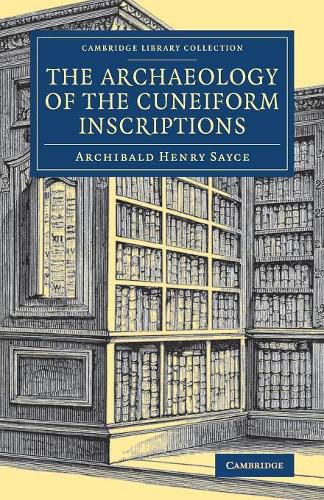Readings Newsletter
Become a Readings Member to make your shopping experience even easier.
Sign in or sign up for free!
You’re not far away from qualifying for FREE standard shipping within Australia
You’ve qualified for FREE standard shipping within Australia
The cart is loading…






Archibald Henry Sayce (1845-1933) became interested in Middle Eastern languages and scripts while still a teenager. Old Persian and Akkadian cuneiform had recently been deciphered, and popular enthusiasm for these discoveries was running high when Sayce began his academic career at Oxford in 1869. In this 1907 work, based on lectures delivered in Edinburgh in the previous year, he considers the state of archaeological knowledge of Babylonia and Assyria, which he describes as ‘miserably deficient’, and in particular the paradox of a huge number of cuneiform tablets in various languages drawn from many sites at which the original excavation had not provided an adequate context. Beginning with the history of the decipherment of cuneiform, Sayce goes on to describe what the tablets reveal of political and trade interactions among the different nations of the Near East and Asia Minor, and the relevance of these discoveries to Old Testament studies.
$9.00 standard shipping within Australia
FREE standard shipping within Australia for orders over $100.00
Express & International shipping calculated at checkout
Archibald Henry Sayce (1845-1933) became interested in Middle Eastern languages and scripts while still a teenager. Old Persian and Akkadian cuneiform had recently been deciphered, and popular enthusiasm for these discoveries was running high when Sayce began his academic career at Oxford in 1869. In this 1907 work, based on lectures delivered in Edinburgh in the previous year, he considers the state of archaeological knowledge of Babylonia and Assyria, which he describes as ‘miserably deficient’, and in particular the paradox of a huge number of cuneiform tablets in various languages drawn from many sites at which the original excavation had not provided an adequate context. Beginning with the history of the decipherment of cuneiform, Sayce goes on to describe what the tablets reveal of political and trade interactions among the different nations of the Near East and Asia Minor, and the relevance of these discoveries to Old Testament studies.